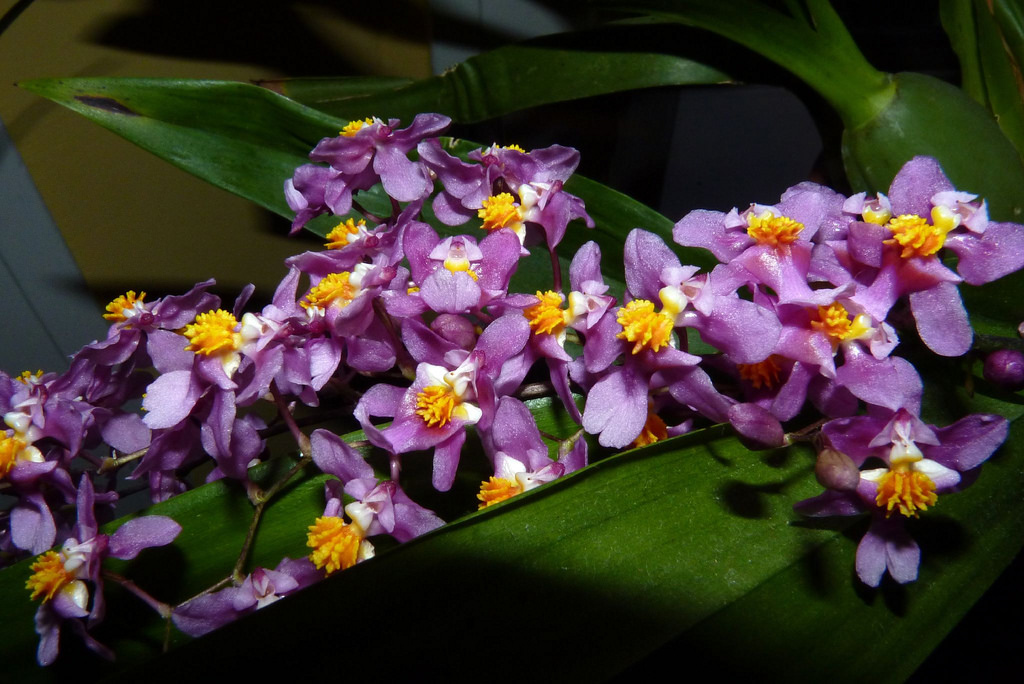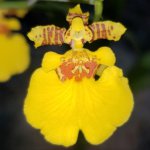Dancing Lady orchid (Oncidium sphacelatum), an epiphytic orchid with beautiful bright yellow flowers and maroon markings. The genus name is derived from the Greek word onkos, which means swelling or mass, referring to the uniquely shaped bump on the lips of its flowers. Oncidium sphacelatum are native to the lush, wild jungles of Central and South America.
You are using an out of date browser. It may not display this or other websites correctly.
You should upgrade or use an alternative browser.
You should upgrade or use an alternative browser.
Dancing Lady orchid (Oncidium sphacelatum)
- Thread starter gardengreetings
- Start date
The genus Oncidium is a spectacular and diverse genus of orchids (Orchidaceae), with 3337 recognized species, and almost inumerable grex hybrids, both intrageneric and intergeneric. The genus does indeed range throughout central and southern Mexico, Central America, and South America, as well as much of the Caribbean. One species (O. ensatum , or alternatively O. floridanum) is even native to southern Florida.
The common name, Dancing Ladies, refers to the way the blooms of some species resemble a woman wearing an ornate ball gown with a full skirt. The image in the previous post is a good example of this.
Though many Oncidium are predominantly yellow, the genus also contains species white, pink, orange, red, and maroon flowers.
Most often, multiple colors are present on the various parts of these complexly structured flowers.
As an example of Oncidium diversity, here is the Pink Bird's Beak Orchid (Oncidium sotoanum, formerly confused with Oncidium ornithorhynchum). This species is native to southern Mexico and Central America.

The common name, Dancing Ladies, refers to the way the blooms of some species resemble a woman wearing an ornate ball gown with a full skirt. The image in the previous post is a good example of this.
Though many Oncidium are predominantly yellow, the genus also contains species white, pink, orange, red, and maroon flowers.
Most often, multiple colors are present on the various parts of these complexly structured flowers.
As an example of Oncidium diversity, here is the Pink Bird's Beak Orchid (Oncidium sotoanum, formerly confused with Oncidium ornithorhynchum). This species is native to southern Mexico and Central America.

Wonderful post with all kinds of great information about Oncidiums, thank you! It's unfortunate that the O. ensatum, or O. floridanum, is considered endangered in Florida where some populations have not been seen for many years "due to changes in hydrology, illegal collection, and habitat loss."
The flowers of the Birds Beak Oncidium (Oncidium sotoanum) are also beautiful with their maroon, white and gold colors!
The flowers of the Birds Beak Oncidium (Oncidium sotoanum) are also beautiful with their maroon, white and gold colors!
Ask a Question
Want to reply to this thread or ask your own question?
You'll need to choose a username for the site, which only take a couple of moments. After that, you can post your question and our members will help you out.
Similar Threads
Forum statistics
Latest Threads
-
Beetles or Beatles
- Started by Oliver Buckle
-
Cherry blossom sapplings are weeping at base of leaves
- Started by Billabong
-
Tomato plants
- Started by buckleycraig
-
Harvesting potatoes
- Started by salty t
-
Garden gone wild...and ants taking over!
- Started by Conor74
-
Anyone know the name of this?
- Started by Anniekay
-
Turns Out, Sunflowers and Lawn Fertilizer Don't Mix
- Started by l008com
-
What type of cherry tree and pruning help!
- Started by bradpitch92
-
What might be causing the end rot on my squash plants?
- Started by Garydave
-
Tea Bags
- Started by Lennie


